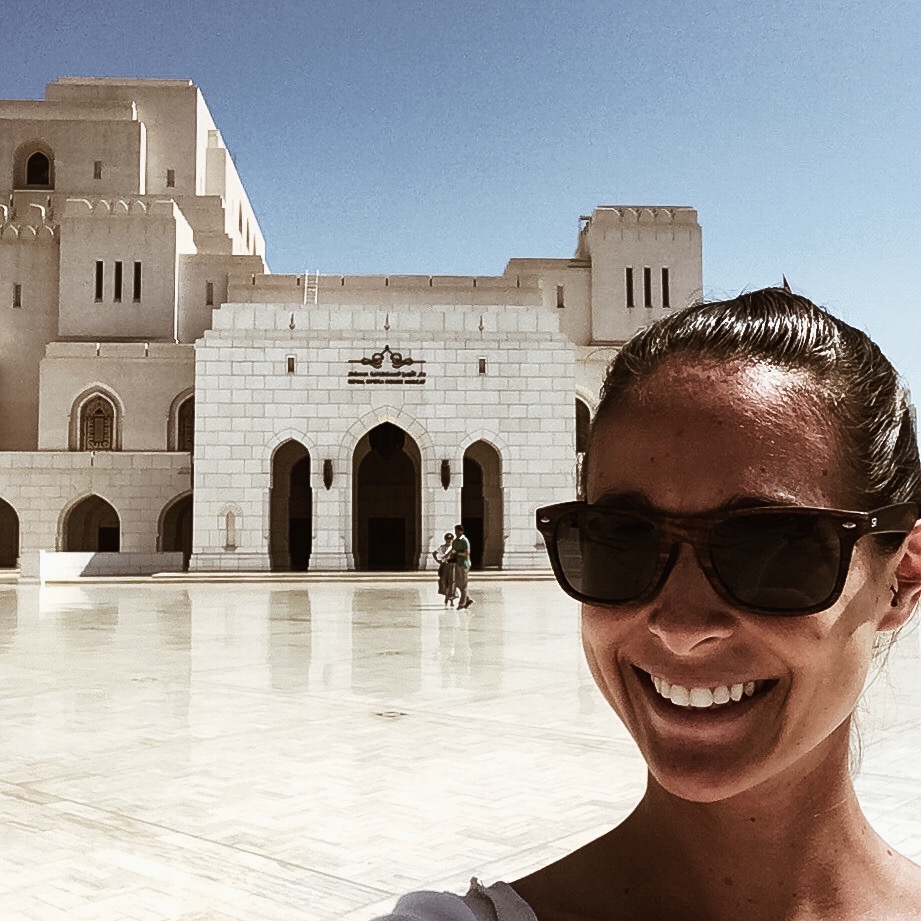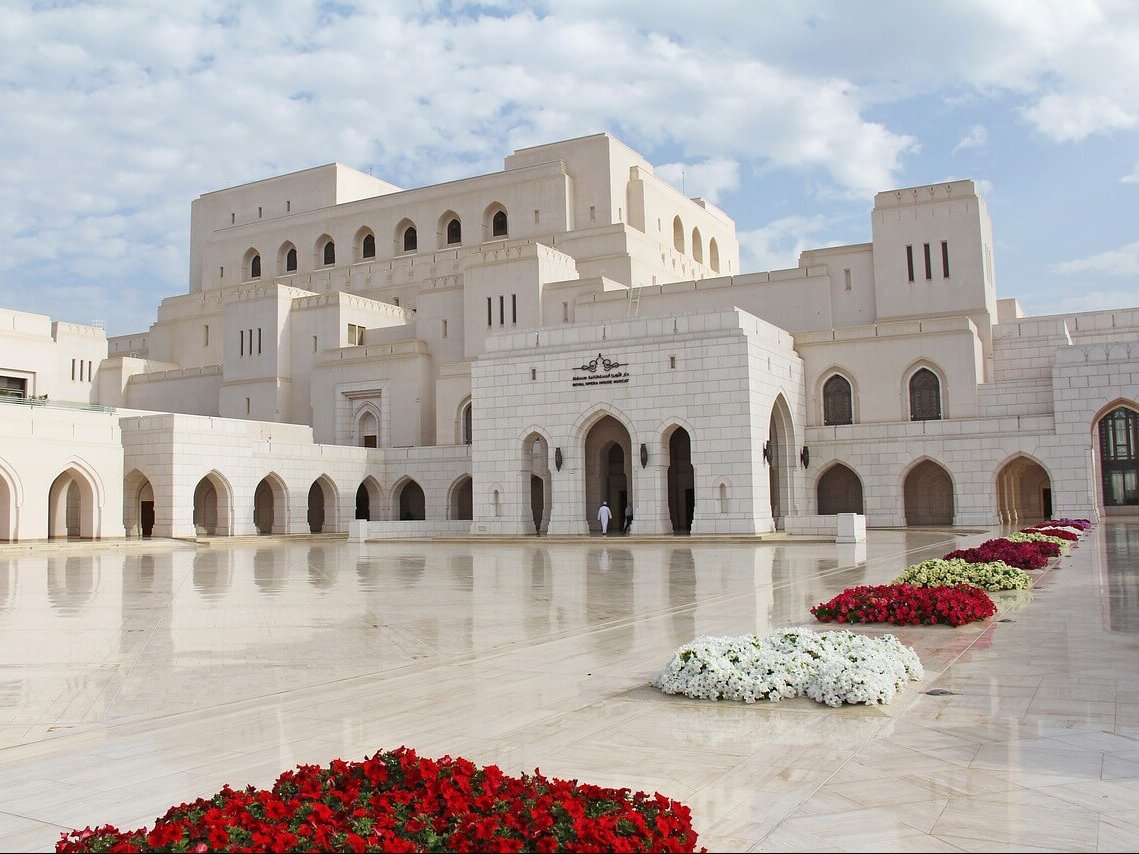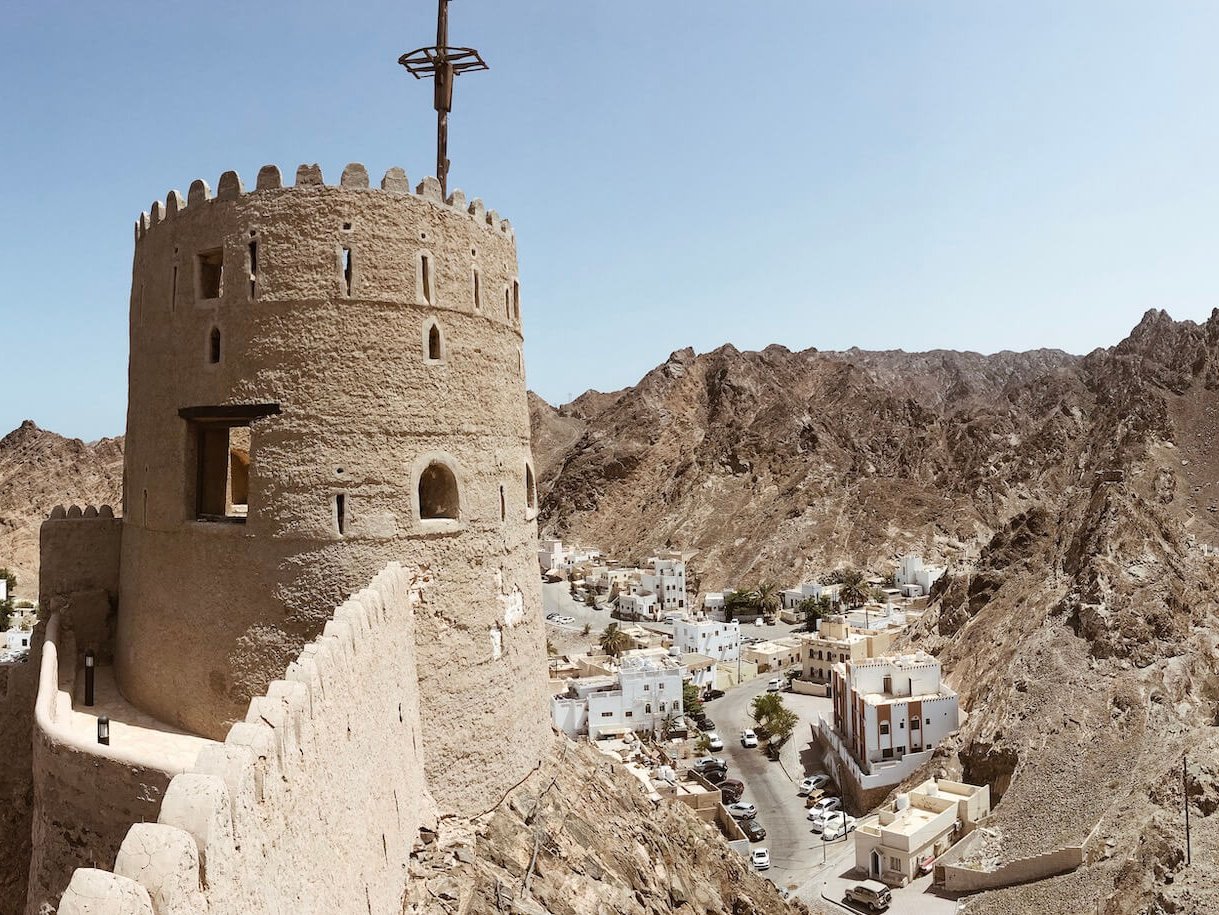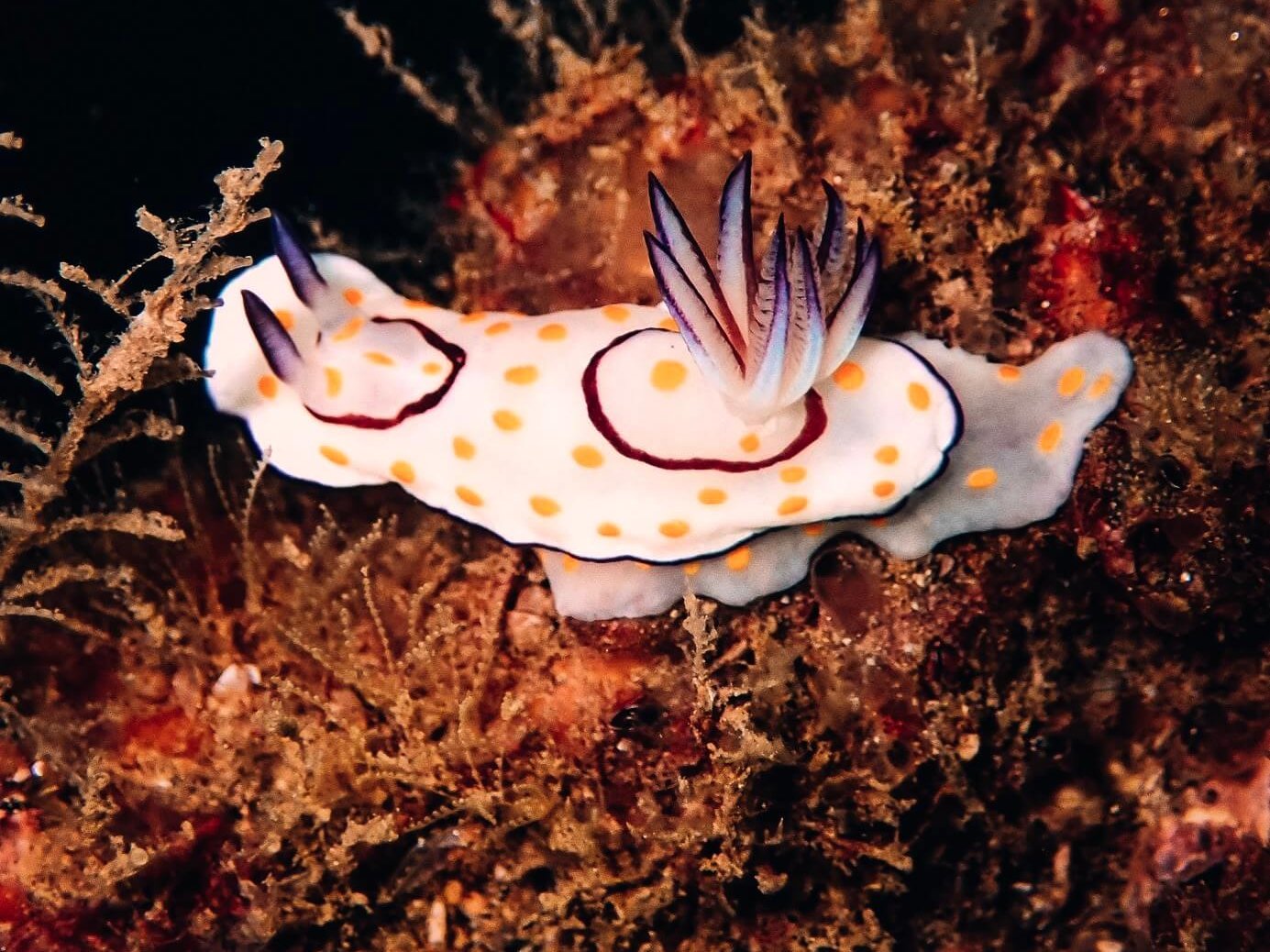Muscat is the capital, port city of Oman. It is wedged in the desert between mountains and ocean, and offers all your arid delights, from 16th-century Portuguese forts, to modern shopping malls and regal palaces.
No one can seem to agree on the true origins of the word Muscat. Lonely Planet, forever romanticizing even the most unpalatable corners of the globe in true wanderlust fashion, says that the name means ‘safe anchorage.’ And this is indeed a very poetic way to describe a city in which the sea plays such an important role. Oman is even said to have been the birthplace of Sinbad the Sailor. Other sources say the word Muscat comes from the Arabic moscha, meaning ‘an inflated hide or skin.’ Or from Old Persian, meaning ‘strong-scented’. Whatever the case, it is a peaceful city that embraces the old sense of Arabia while melding it with today’s modern luxuries.
Our driver for the day was Sa’id, a local Omani with a boyish perma-grin. He dressed for the occasion in his traditional white, long-sleeved gown with one tassel hanging from the right side of the neckline, as well as the iconic embroidered cap, or kummah. Our tour guide was Stefan, who spoke in German for the day given that everyone else in the group was either Swiss-German or German. His tour guide voice and clear annunciation for the occasion allowed me to pick up the gist of what he was saying, mostly stories I had already been privy to. The familiar nature of the stories meant that I only had to understand a couple words here and there before I figured out what he was saying.
One hump or two humps?
We drove the hour through the desert mountains, passing villages filled with goats napping in any spot of shade they could glean along the way. And then the usual landscape of goats and donkeys was interrupted by odd creatures on tall, skinny legs with misshapen backs and proportionately little heads.


Camels!
My only real desire for my trip to Oman had been to see a camel in the desert, and there they were, almost invisible they were so monochrome with the landscape. I had seen camels before at the zoo of course, but a sad animal encaged in a small pen doesn’t count. I wanted to see them out in their natural habitat.


For the record, saying “natural habitat” is a bit misleading. Camels are like horses, in that most of them have been domesticated and very few remain in the wild today. The only true, wild camels that still exist in the world now live in the Gobi Desert, although some feral populations can also be found in Australia (never would have guessed!), India, and Kazakhstan. I could just keep talking about camels for the rest of this post. In fact, I felt as though my trip to Oman was complete after seeing the camels (and there were babies too!), but some of you may actually want to hear about the city tour.
Oman’s Parliament Building
Our first stop, before reaching the edge of the desert mountain wilderness, was at an elevated viewpoint of the parliament building, far down below.

The site was massive, spanning over 100,000 square meters (1,076,000 square feet). Some fun facts I learned about the parliament building include that the clocktower centerpiece was the highest in Oman at 64 meters (209 feet). Also, each of the clocks used were 4.8 meters (16 feet) in diameter. That’s about 2/3 the size of London’s Big Ben.

Eventually we passed the roundabout with the teapot fountain, a landmark I had come to associate with the hour-drive to Muscat being almost over. I was a fan of the teapots. Everyone else was on the city tour to see the Grand Mosque and the souq, but I just wanted to see some camels and interesting art pieces (another of which looked like a giant incense burner that I will come back to later).

Sultan Qaboos Grand Mosque
Our first visit was to the Sultan Qaboos Grand Mosque. I struggled with the decision of whether or not to actually go into the mosque. On the one hand, I always feel like I’m trespassing, entering the holy place of a god I don’t worship. Surely such a place should be reserved for believers. Then again, I guess I’ve “toured” plenty of sacred places in other countries, but many of those also had historical significance. This mosque was brand new, but if it was as grand as all the hype, then one day it would be just as significant as any other historical landmark. Plus it was a cultural experience, and in Oman, culture and religion are so closely intertwined that it is nearly impossible to experience one without experiencing the other. So curiosity finally got the better of me, and I had to ask myself, what kind of travel writer would I be if all I had to say about the place was that I waited in the car?

The other ladies and myself spent a few minutes covering every inch of everything except for our hands and faces, and then we began our walk around the elaborate grounds.


The mosque was built in just six years, from 300,000 tons of Indian sandstone. It was inaugurated by Sultan Qaboos on May 4, 2001 to celebrate 30 years of his reign. The mosque did everything it aimed to do, it made us ooh and ahh with every arched entryway and elaborately carved wall.




We entered the women’s prayer hall first, capable of accommodating 750 worshipers. The room was beautiful, with crystal chandeliers and intricately carved doorways, but it was nothing compared to what we experienced next in the men’s prayer hall, or musalla.


The main musalla was obscene, and beautiful, all at once. I felt slightly sick to my stomach at the extravagant display of so much wealth. The floor was carpeted with what was, for a moment, the largest carpet in the world, before Abu Dhabi’s Grand Mosque measured it and made a bigger one. Biggest or not though, it contained 1,700,000,000 knots, weighed 21 tons, and took four years to make. It covered the entire room, measuring 70 by 60 meters (230 by 200 feet). Our lowly feet were not allowed to touch so much extravagance, and a tarp pathway had been laid out for the tour groups to traipse over.

The ceiling was adorned with the largest chandelier in the world. It was made of 600,000 Swarovski crystals, 24 carat gold plating, and 1,122 halogen bulbs. The monstrosity weighed 8.5 tons and was 14 meters (46 feet) tall. Invisible from our view, it even had a staircase on the inside for maintenance. Pictures don’t do the thing justice, because no matter how perfect your photography skills are, you just can’t replicate the experience of staring up at 8.5 tons of glowing crystals. Just ask a hippie.
(Just kidding, don’t ask a hippie, because apparently manmade crystals don’t have the same vibrations as quartz. I am so going to the bad place for discussing healing crystals and mosques in one paragraph. This is why I should have waited in the car.)

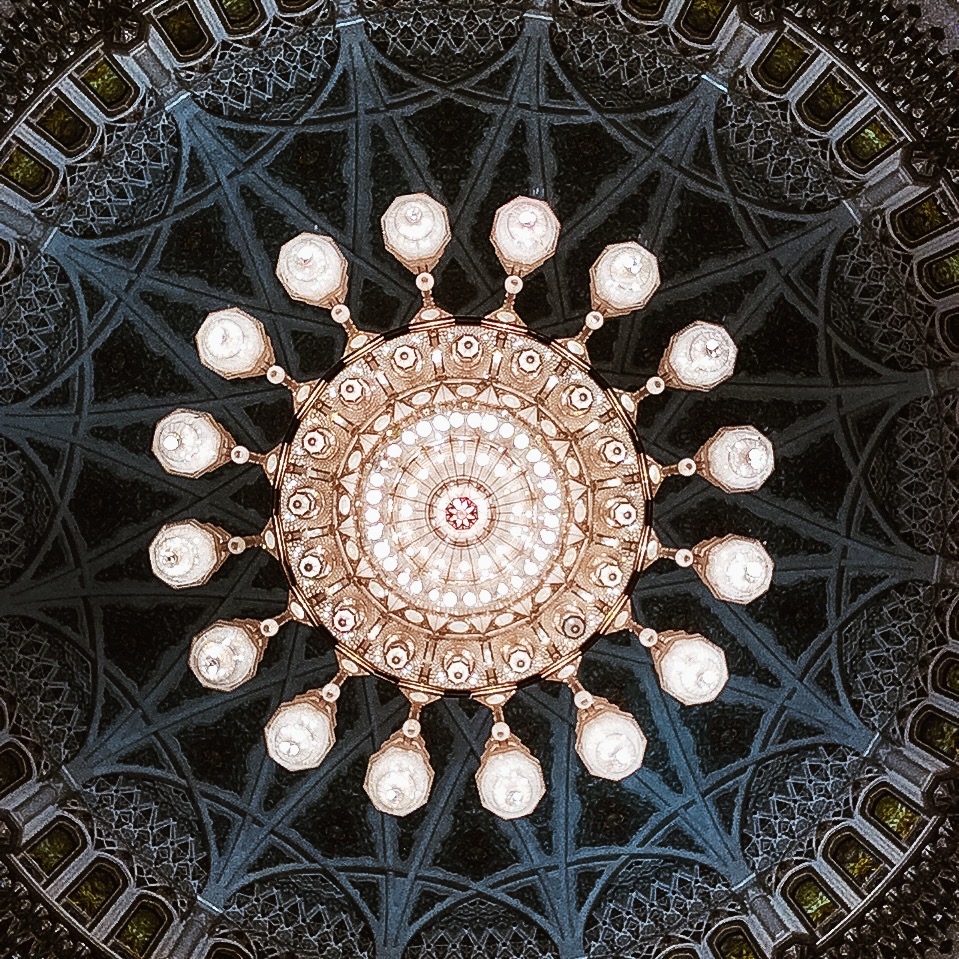
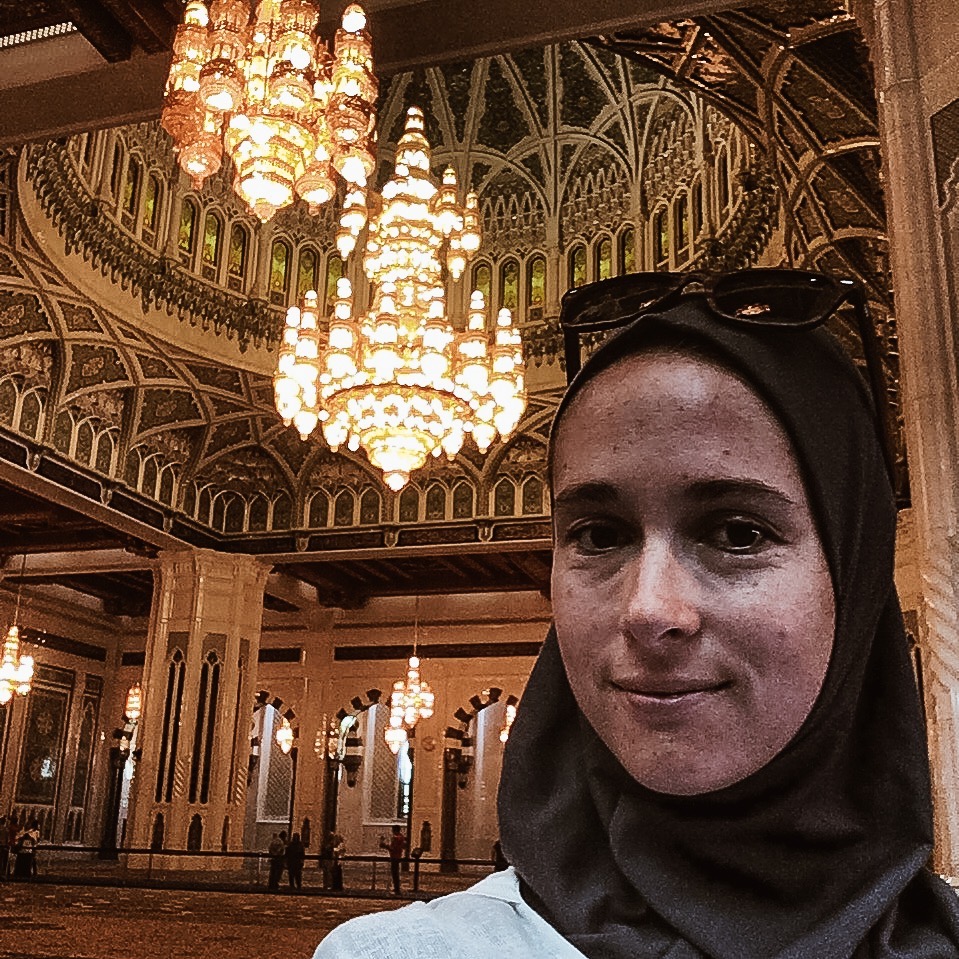
The main musalla could accommodate 6,500 worshippers. When that filled up on Fridays, the outer courtyard could hold another 8,000 worshipers. Some other additional spaces plus the women’s musalla, brought the total capacity of the mosque up to 20,000 worshipers.

If you wish to see the mosque for yourself, it is open from 8:00 – 11:00 am for non-Muslims everyday except Friday, and there are no entry fees.
Royal Opera House Muscat
Our next stop was the Royal Opera House. I already dedicated an entire post to this regal performance hall, and so will try to refrain from repeating myself. Visiting during daylight hours as part of a tour group stole away some of the magic, but it also taught me a few things about the opera house that I wouldn’t have known from only attending a performance. For instance, the boxes were designed after traditional, Omani boxes, called mandoos. I guess a better description of a mandoo would be a wooden dowry chest.



Our tour guide also tried to proclaim that the opera house was home to the world’s largest pipe organ, with 4,600 pipes. I am no aficionado of pipe organs by any means, but that didn’t quite sound right. So I had to look it up. What did we ever do before Google? Believe that everything in the world was the biggest or grandest in some form or fashion?
As it turns out, the Royal Opera House’s organ has 4,542 pipes. The largest organ in the world is in New Jersey and has 32,114 pipes, but that one isn’t actually functional. The largest functioning organ is in Philadelphia and has 28,750 pipes. So there you go. You thought you were going to learn something about Oman, and instead I am teaching you about camels and pipe organs. Oh man…

Moving on.


Or not moving on… This post has gone on longer than I intended, so it looks like you are getting a part II! Stay tuned!
